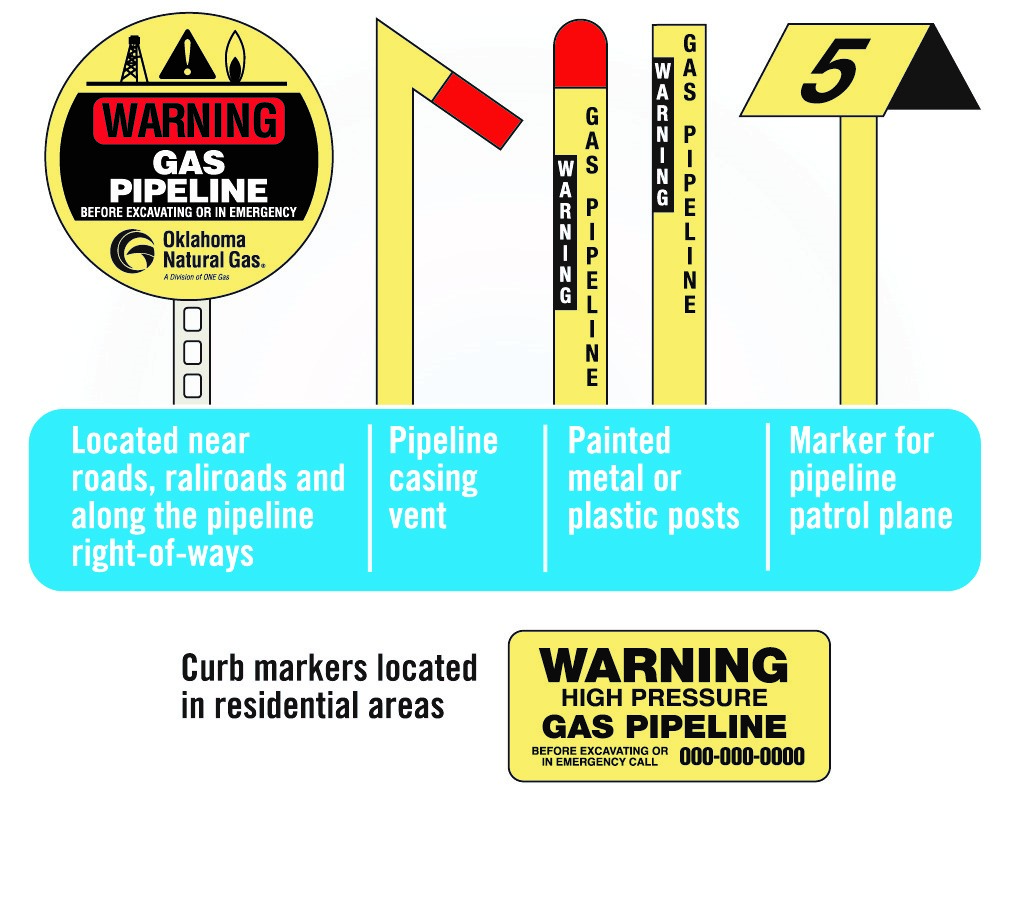Listed below are some of the safety measures that you must be aware off while using or installing the Oklahoma Natural gas at your home / building / office. Once ONG pipeline, meters and other assets have been installed, you must be careful about following things.
Pipeline Safety
In case any damage is caused to a pipeline by you, Oklahoma Natural Gas requests you to notify them at the earliest possible by calling at 800-458-4251. Unattended damage to the pipeline, due to scrapes, dents, or dings, can lead to a leakage of gas in the possible future, unless it is repaired.
Thus, even if you believe the pipeline did not incur any heavy damage, you should contact Oklahoma Natural Gas, so that the damage can be assessed and necessary repairs be made.
In case the damage to the pipeline has caused natural gas to be released, you are advised to immediately vacate the area. Once you are away from the source of the leak, call 911 and Oklahoma Natural Gas at 800-458-4251.

You are cautioned against inspecting the damage yourself or covering it with dirt or debris. Oklahoma Natural Gas should be contacted to check the pipeline and make the necessary repairs. To report any suspicious activity near the pipeline, call 911.
Meter Safety
The natural gas meter installed at your property should be accessible to Oklahoma Natural Gas employees at all times for documenting the readings, maintenance, testing, and replacement. Customers are not required to perform any maintenance task on the natural gas meters installed on their property, however, there are a few safety tips they should keep in mind:
- For the safety of Oklahoma Natural Gas’ employees, it is advised that you do not tie your pets near the meter. Moreover, under no circumstances should the pets be tied to the meter itself.
- To protect the meter and the piping refrain from attaching anything to or stacking anything on top of the meter.
- A radius of at least three feet from the gas meter should be free of plants and shrubbery, as the penetrating roots can damage the meter or the piping.
- Be careful while clearing snow or ice from near the meter as force from blunt objects can chip and damage the natural gas meter.
Right-of-Way
What it means, simply, is that pipeline operators, such as Oklahoma Natural Gas, are allowed to access buried pipelines.
Keeping the Right-of-Way Clear
A pipeline right-of-way refers to a designated strip of land that hosts buried pipelines and other natural gas equipment. This ensures that the pipelines can be located on public or private property permanently and provide natural gas services without disruption.
There should be no obstructions to the right-of-way. Oklahoma Natural Gas employees and contractors should be able to safely monitor, operate, maintain, and repair the pipelines. Right-of-way should not be obstructed by any construction, plants or storing things near the area. It is important that it can be accessed easily at all times.
In rural areas, pipeline right-of-way is indicated by specific markers, as shown in the pictures above, highlighting the presence of buried pipelines. However, populated areas may not always have such markers. In either case, excavation should only be started after calling 811 and getting underground utility lines located and marked.
Similarly, before starting any construction project on your private property- such as installing fences, mailboxes, or sprinklers- call 811. It is important to get natural gas pipelines and other utility services marked. There is no additional cost for the process and it ensures that the pipeline is not damaged.
Right-of-Way Reminders
- 48 hours before the excavation is to begin, natural gas service providers should be contacted to ensure the presence of buried pipelines. You can call 811 to schedule an inspection on any day except the day of notifications, weekends, and holidays.
- Digging should not begin unless all locations of utilities are marked or cleared.
- Digging should not be done at locations that are marked as utilities.
- Tall plants or shrubbery should not be planted on or near the right-of-way.
- Digging, planting, or storing on or near the right-of-way should be avoided.